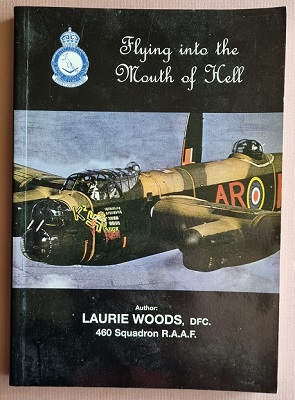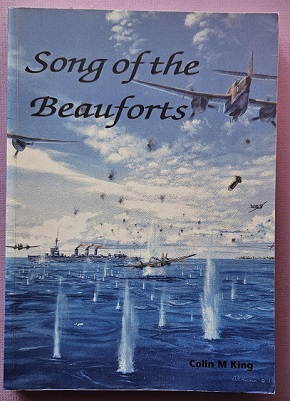Description
Title: Flying Into the Mouth of Hell
Author: Woods, Laurie DFC
Condition: Near Mint – Inscription and signed by the author on the title page.
Edition: 1st Edition
Publication Date: 2003
ISBN: 0646332678
Cover: Soft Cover without Dust Jacket – 241 pages
Comments: The story of Royal Australian Air Force service culminating in a tour of operations against the enemy, whilst an aircrew member on the Australian Lancaster 460 squadron immediately following the invasion of Europe by the allied forces. Dedicated to the aircrew of Bomber Command, and to all those who did not return.
No. 460 Squadron, Royal Australian Air Force, was formed at Molesworth in the United Kingdom on 15 November 1941. It was an “Article XV Squadron”, formed in accordance with agreements that implemented the Empire Air Training Scheme. The squadron became part of the Royal Air Force’s Bomber Command and joined the strategic bombing campaign against Germany. Equipped with Vickers Wellington bombers, it mounted its first raid, against the German city of Emden, on 12 March 1942.
In the ensuing three years the squadron was heavily committed to operations over Germany, Italy and German-occupied Europe. It operated, in succession, from airfields at Molesworth (15 November 1941 – 3 January 1942), Breighton (4 January 1942 – 14 May 1943), and Binbrook (14 May 1943 – 27 July 1945). Although it had originally been planned to re-equip the squadron with Handley Page Halifaxes in September 1942, it began operating Avro Lancasters in the following month and joined Bomber Command’s 1 Group. The bulk of the squadron’s operations formed part of the strategic bombing offensive against Germany, although prior to, and during, the D-Day landings in June 1944, it was employed in support of Allied ground operations. The squadron flew its last raid, against Berchtesgarden, on ANZAC Day 1945.
The squadron is regarded as having been the most efficient of the Australian bomber squadrons. It maintained consistently higher serviceability rates among its aircraft, set numerous operational records within Bomber Command, flew the most bombing raids of any Australian squadron, and was credited with the greatest tonnage of bombs dropped – 24,856 tons. The Australian War Memorial’s Lancaster “G for George” was a 460 Squadron aircraft. The squadron, however, suffered heavily. It lost 181 aircraft on operations and suffered 1,018 fatal casualties (589 Australian) – the highest number of any of the Australian squadrons.
Following the end of hostilities in Europe in April 1945, the squadron participated in Operation Manna, which involved the air-dropping of food to Dutch civilians during the first week of May 1945. It was subsequently employed to transport liberated Commonwealth prisoners of war to Britain. With this role complete, 460 Squadron was selected to form part of “Tiger Force”, Bomber Command’s intended contribution to the strategic bombing of Japan, which necessitated a transfer to No. 5 Group and a move to East Kirby. The war in the Pacific ended, however, before “Tiger Force” was deployed. The squadron relinquished its aircraft in early October 1945, and disbanded on the 25th of that month.





